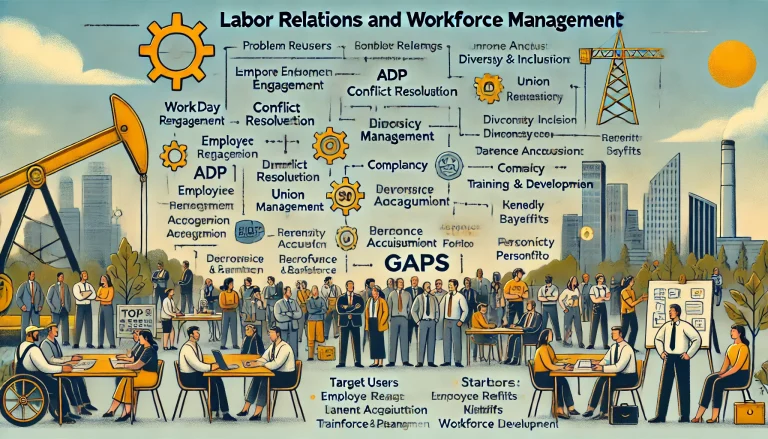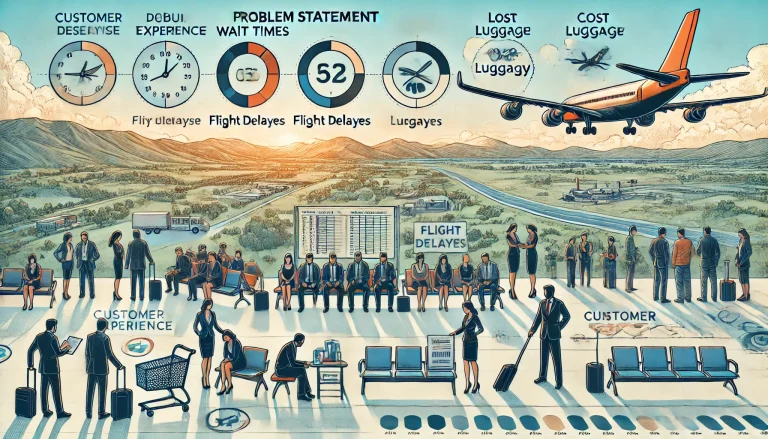Problem Statement
Human trafficking is a global crime that affects millions of vulnerable individuals, and airports and airlines are often unwittingly involved in its execution. Traffickers use the anonymity and mobility provided by air travel to transport victims across borders, making the aviation industry a key battleground in the fight against this heinous crime. The challenge for airlines and airports is to effectively identify and address human trafficking without compromising the privacy and rights of passengers.
The complexity of human trafficking means that traffickers often blend in with ordinary travelers, making it difficult for untrained personnel to spot potential victims. Victims may be coerced into behaving normally, making it even more challenging to identify suspicious behavior. This makes training for airline and airport staff critical. They must be equipped with the knowledge and tools to recognize subtle signs of trafficking, such as unusual behavior, mismatched travel documents, or a passenger appearing fearful or controlled by another traveler.
However, addressing human trafficking within the aviation industry is not without challenges. Airlines and airports must balance their efforts to combat trafficking with the need to respect passengers’ privacy and rights. This requires a nuanced approach that involves careful observation and discretion, ensuring that legitimate travelers are not subjected to unnecessary scrutiny or harassment.
Collaboration with law enforcement is also crucial. When trafficking is suspected, airline and airport staff must know how to respond appropriately, ensuring that law enforcement is notified and that the safety of potential victims is prioritized. This collaboration extends beyond national borders, as trafficking is often an international crime requiring coordination with agencies in different countries.
Moreover, public awareness and education are vital components in the fight against human trafficking. Passengers themselves can play a role in identifying and reporting suspicious activity, provided they are informed about what to look for and how to report it. Airlines and airports can support these efforts by providing information and resources to travelers, helping to create a vigilant and informed public.
In combating human trafficking, the aviation industry must implement comprehensive strategies that include staff training, public awareness, and close collaboration with law enforcement, all while respecting the rights of passengers. By taking a proactive stance, airlines and airports can play a significant role in disrupting trafficking networks and protecting vulnerable individuals.
Pain Points
- Difficulty in Identifying Traffickers: Traffickers often blend in with ordinary travelers, making it challenging to spot suspicious behavior.
- Victim Coercion: Victims may be coerced into behaving normally, making it hard for untrained staff to recognize signs of trafficking.
- Balancing Privacy and Security: The need to respect passengers’ privacy and rights while identifying potential trafficking victims.
- Limited Staff Training: The lack of comprehensive training programs for airline and airport staff to recognize and respond to trafficking.
- Discreet Observation: Ensuring that staff can observe potential trafficking situations without causing alarm or infringing on passengers’ rights.
- Coordination with Law Enforcement: The challenge of effectively collaborating with law enforcement across different jurisdictions.
- Cross-Border Cooperation: The need for international collaboration in identifying and responding to human trafficking cases.
- Public Awareness: The need to educate the traveling public about human trafficking and encourage reporting of suspicious activity.
- Resource Allocation: Balancing the allocation of resources to combat trafficking with other operational priorities.
- Legal and Ethical Considerations: Navigating the legal and ethical implications of profiling and intervention in suspected trafficking cases.

Future Vision
Our platform envisions a future where the aviation industry plays a pivotal role in combating human trafficking, employing a combination of advanced training, strategic collaboration, and public engagement to protect vulnerable individuals. To achieve this, the platform will support airlines and airports in implementing comprehensive anti-trafficking strategies that prioritize both security and the rights of passengers.
One of the key focuses will be on enhancing staff training. The platform will advocate for the development of robust training programs that equip airline and airport personnel with the skills to recognize and respond to signs of human trafficking. This training will be designed to be both thorough and sensitive, ensuring that staff can identify potential trafficking situations without violating passengers’ rights. Training modules will include real-world scenarios, highlighting subtle signs of trafficking, such as behavioral cues, discrepancies in travel documentation, and interactions between traffickers and victims.
In addition to training, the platform will promote the integration of discreet observation techniques. Staff will be trained to monitor situations carefully and to escalate concerns in a manner that prioritizes the safety of potential victims while avoiding unnecessary alarm. The platform will also provide guidelines on how to balance vigilance with the need to respect passenger privacy.
Collaboration with law enforcement will be strengthened through the creation of standardized protocols for reporting and responding to suspected trafficking cases. Airlines and airports will be encouraged to establish direct lines of communication with local and international law enforcement agencies, ensuring that suspected cases are handled swiftly and effectively. This collaboration will include joint training exercises, information sharing, and the development of cross-border response strategies.
Public awareness campaigns will also be a critical component of the platform’s strategy. By educating travelers about the signs of human trafficking and encouraging them to report suspicious activity, the platform aims to create a more vigilant and informed public. This will involve the distribution of informational materials in airports, in-flight announcements, and partnerships with non-governmental organizations (NGOs) to amplify awareness efforts.
To ensure the successful implementation of these strategies, the platform will emphasize the importance of resource allocation. Airlines and airports will be guided in balancing their anti-trafficking efforts with other operational priorities, ensuring that sufficient resources are dedicated to training, collaboration, and public awareness initiatives.
By addressing these challenges and leveraging the strengths of the aviation industry, our platform aims to create an environment where human trafficking is significantly disrupted, and vulnerable individuals are protected. This proactive approach will not only enhance the safety and security of air travel but also contribute to the global fight against human trafficking.
Use Cases
- Comprehensive Staff Training: Implementing robust training programs for airline and airport staff to recognize and respond to signs of human trafficking.
- Discreet Observation Techniques: Training staff to monitor potential trafficking situations without causing alarm or infringing on passengers’ rights.
- Standardized Reporting Protocols: Establishing clear protocols for reporting and responding to suspected trafficking cases, in collaboration with law enforcement.
- Cross-Border Collaboration: Developing strategies for international cooperation in identifying and addressing human trafficking in air travel.
- Public Awareness Campaigns: Launching awareness initiatives to educate travelers about human trafficking and encourage reporting of suspicious activity.
- Passenger Privacy Safeguards: Ensuring that anti-trafficking efforts do not compromise the privacy and rights of legitimate travelers.
- Resource Allocation Strategies: Guiding airlines and airports in allocating resources to effectively combat human trafficking while maintaining operational priorities.
- Partnerships with NGOs: Collaborating with non-governmental organizations to enhance training, awareness, and victim support efforts.
- Real-World Scenario Training: Incorporating real-world scenarios into staff training programs to enhance the effectiveness of anti-trafficking efforts.
- Continuous Improvement: Establishing mechanisms for regularly updating and improving anti-trafficking strategies based on feedback and evolving best practices.
Target Users and Stakeholders
- User: Airline Operations Teams, Airport Security Personnel, Customer Service Managers, Law Enforcement Liaisons, and Training Coordinators
- Age Group: 30-60 years
- Gender: M/F
- Usage Pattern: Regular usage for training, monitoring, reporting, and collaborating on anti-trafficking initiatives in the aviation industry
- Benefit: Enhanced ability to identify and respond to human trafficking, improved collaboration with law enforcement, and increased public awareness
- Stakeholders:
- Airlines: Companies that need to implement anti-trafficking strategies while maintaining passenger privacy and operational efficiency.
- Airports: Facilities that serve as key points of transit and need to collaborate closely with airlines and law enforcement to combat trafficking.
- Law Enforcement Agencies: Bodies responsible for investigating and prosecuting human trafficking cases, requiring close collaboration with the aviation industry.
- Non-Governmental Organizations (NGOs): Organizations that provide support to trafficking victims and assist in training and awareness efforts.
- Passengers: Individuals who may encounter trafficking situations and need to be informed about how to report suspicious activity.
- Regulatory Bodies: Agencies that oversee aviation industry practices and ensure compliance with anti-trafficking regulations.
Key Competition
- Delta Air Lines: Known for its active participation in anti-trafficking initiatives, including training programs for staff and collaboration with NGOs.
- American Airlines: Implements comprehensive staff training and public awareness campaigns to combat human trafficking in air travel.
- Southwest Airlines: Focuses on training flight attendants and ground staff to recognize and respond to signs of trafficking, with strong ties to law enforcement.
- United Airlines: Collaborates with law enforcement and NGOs to develop and implement anti-trafficking protocols and support initiatives.
- JetBlue Airways: Engages in public awareness campaigns and staff training to identify and address human trafficking in the aviation industry.
Products/Services
- Delta Air Lines Anti-Trafficking Training: Providing training programs for staff to recognize signs of trafficking and respond appropriately.
- American Airlines Public Awareness Campaigns: Launching initiatives to educate passengers about human trafficking and encourage reporting.
- Southwest Airlines Law Enforcement Collaboration: Establishing partnerships with law enforcement for joint training and response protocols.
- United Airlines NGO Partnerships: Working with non-governmental organizations to enhance training and support services for trafficking victims.
- JetBlue Airways Passenger Privacy Safeguards: Implementing strategies to protect passenger privacy while identifying potential trafficking situations.
Active Startups
1.TraffickWatch: Provides training platforms and real-time monitoring tools to help airline and airport staff identify and respond to human trafficking.
- SafeFlight: Specializes in discreet monitoring technologies that allow airline personnel to observe potential trafficking situations without violating passenger privacy.
- TraffikAI: Develops AI-driven solutions for detecting suspicious behavior and identifying potential human trafficking in airports and on flights.
- RescueAero: Focuses on creating partnerships between airlines, airports, and law enforcement to facilitate rapid responses to suspected trafficking cases.
- FlySafe Initiative: Offers public awareness campaigns and educational materials for passengers and staff on identifying and reporting human trafficking.
- SecureFlight: Provides secure reporting platforms that allow airline staff to report suspected trafficking anonymously and in real-time.
- AirGuard: Develops cross-border collaboration tools that help airlines and law enforcement agencies share information and coordinate anti-trafficking efforts.
- FlyAware: Focuses on passenger education, offering in-flight materials and airport signage to raise awareness of human trafficking.
- FlightSafe Training: Provides comprehensive training programs for airline and airport staff, incorporating real-world scenarios and best practices.
- BlueSky Partners: Specializes in creating partnerships between airlines, NGOs, and government agencies to enhance anti-trafficking efforts.
Ongoing Work in Related Areas
- AI-Driven Monitoring Solutions: Researching the development of AI tools that can detect signs of human trafficking in real-time without compromising passenger privacy.
- Cross-Border Collaboration Models: Exploring new frameworks for international cooperation in combating human trafficking, particularly in the aviation sector.
- Legal and Ethical Guidelines: Developing guidelines for balancing security measures with the legal and ethical considerations of passenger rights.
- Public Awareness Innovation: Creating new methods for educating the public about human trafficking, including digital campaigns, in-flight content, and airport signage.
- Victim Support Initiatives: Enhancing support services for trafficking victims, focusing on immediate care and long-term rehabilitation.
Recent Investment
- TraffickWatch: $15M in Series A funding led by social impact investors, February 2021.
- TraffikAI: $10M in Series B funding led by tech-focused venture capital firms, October 2020.
- RescueAero: $8M in Seed funding from private equity firms specializing in aviation security, March 2021.
- SafeFlight: $7M in Series A funding from ethical technology investors, June 2021.
- FlySafe Initiative: $5M in Seed funding from foundations focused on human rights, December 2020.
Market Maturity
The market for anti-trafficking solutions in the aviation industry is rapidly maturing as airlines and airports increasingly recognize their role in combating this global crime. Companies like Delta Air Lines, American Airlines, and United Airlines are leading the way with comprehensive training programs, public awareness campaigns, and collaboration with law enforcement and NGOs. Startups such as TraffickWatch, TraffikAI, and RescueAero are driving innovation in monitoring technologies, cross-border collaboration tools, and AI-driven detection systems. Significant investments in AI-driven monitoring solutions, cross-border collaboration models, and victim support initiatives are transforming the aviation industry’s approach to combating human trafficking. As the market continues to evolve, we expect to see more integrated and advanced solutions that enhance the effectiveness of anti-trafficking efforts while respecting the rights and privacy of passengers.
Summary
Airports and airlines are often unwittingly involved in human trafficking, a global crime that exploits vulnerable individuals. The aviation industry faces the challenge of identifying and addressing human trafficking without compromising the privacy and rights of passengers. Training staff to recognize signs of trafficking and collaborating with law enforcement is crucial in combating this issue. Our proposed platform leverages comprehensive staff training, discreet observation techniques, standardized reporting protocols, cross-border collaboration, public awareness campaigns, passenger privacy safeguards, resource allocation strategies, partnerships with NGOs, real-world scenario training, and continuous improvement initiatives to address these challenges. Key pain points include difficulty in identifying traffickers, victim coercion, balancing privacy and security, limited staff training, discreet observation, coordination with law enforcement, cross-border cooperation, public awareness, resource allocation, and legal and ethical considerations.
Target users include airline operations teams, airport security personnel, customer service managers, law enforcement liaisons, and training coordinators, with stakeholders encompassing airlines, airports, law enforcement agencies, NGOs, passengers, and regulatory bodies. Key competitors like Delta Air Lines, American Airlines, Southwest Airlines, United Airlines, and JetBlue Airways offer various anti-trafficking training programs, public awareness campaigns, and law enforcement collaboration strategies, while startups such as TraffickWatch, TraffikAI, and RescueAero are driving innovation in monitoring technologies, cross-border collaboration tools, and AI-driven detection systems. Recent investments highlight significant interest and growth potential in platforms addressing the challenges of human trafficking in the aviation industry.
By addressing these challenges and leveraging advanced technologies and strategies, our platform aims to help airlines and airports play a significant role in disrupting human trafficking networks and protecting vulnerable individuals. This proactive approach will enhance the safety and security of air travel while contributing to the global fight against human trafficking.
.



